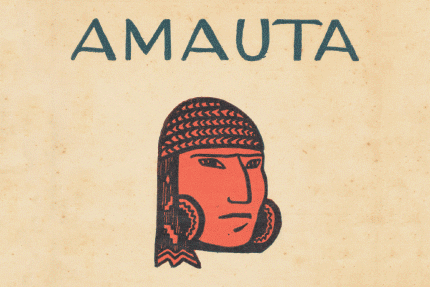February 20–May 27, 2019
This coming February, the Museo de Arte de Lima - MALI, one of Peru’s leading art institutions, will open three major exhibitions in Madrid, as part of the cultural program around ARCOmadrid which has Peru as guest country.
The Avant-Garde Networks of Amauta. Argentina, Mexico and Peru in the 1920s
Museo Nacional Centro de Arte Reina Sofía (MNCARS), Madrid
February 20-May 27
Curators: Beverly Adams and Natalia Majluf
The Museo Nacional Centro de Arte Reina Sofía (MNCARS) will host The Avant-Garde Networks of Amauta. Argentina, Mexico and Peru in the 1920s, a project co-organized by MALI and Blanton Museum of Art (University of Texas, Austin), with the support of the Archivo Mariátegui. The exhibition proposes a new narrative on the Latin American avant-gardes from the perspective of the influential publication Amauta, created and directed by José Carlos Mariátegui in Lima between 1926 and 1930. The exhibition recovers forgotten chapters of the art of the twenties and reveals the importance of Mariátegui’s pluralistic vision, which remains as a key reference in cultural discussions of Latin America. An international tour to Peru, Mexico and the United States will follow.
This exhibition has been possible thanks to generous support of the Diane and Bruce Halle Foundation, the North American Cultural Institute in Peru, the José Carlos Mariátegui Archive, the Peruvian Ministry of Culture and PromPerú.
Amazonias
Matadero, Madrid
February 23-May 5
Curators: Gredna Landolt and Sharon Lerner
Matadero Madrid will host Amazonias, a show that gathers an exceptional ensemble of more than one hundred works by more than forty Peruvian and Latin American artists stemming from MALI’s contemporary collection as well as private collections. The Amazonian region is a territory that sums many of the most crucial debates for contemporary life: from the fight for the rights of indigenous communities and the preservation of their ancestral knowledge to the protection of the natural environment, vital for planetary survival. The exhibition’s title, in its plural condition, aims at reflecting the multiplicity of artistic takes on this geographic and social space that holds an important part of the Peruvian territory. Amazonias is co-produced by Museo de Arte de Lima-MALI, Centro Cultural Inca Garcilaso del Ministerio de Relaciones Exteriores del Perú and Matadero Madrid.
This exhibition has been possible thanks to the generous support of the Peruvian Ministry of Culture and LXG Capital.
Nasca - Peru, Searching for traces in the desert
Espacio Fundación Telefónica, Madrid
February 22-May 19
Curators: Peter Fux and Cecilia Pardo
Espacio Fundación Telefónica Madrid will host the highly successful Nasca - Peru, Searching for traces in the desert, an exhibition that explores the nature and significance of this ancient pre-Columbian culture which developed between 200 B.C. and 650 A.D. on Peru’s arid southern coast. Since its discovery in the early 20th century, Nasca has dazzled the world with its striking ceramics and fine textiles, as well as its geoglyphs, the enormous drawings rendered on the pampas, whose very nature and function has been the subject of intense debate. This show includes a representative selection of ceramics, textiles, and metal objects as well as photographs and videos offering a contemporary perspective on Nazca and its surroundings. The exhibition has been co-organized by MALI and the Rietberg Museum (Zurich) with the collaboration of the Bundeskunsthalle (Bonn), Fundación Telefónica and PromPerú. The show has been previously shown in Lima, Zurich and Bonn.
About the Museo de Arte de Lima - MALI
Founded in 1954, the MALI is a private, non-profit cultural organization devoted to the promotion of the visual arts in Peru. MALI houses the only representative survey collection of Peruvian art, consisting of over 20,000 artworks. This vast permanent collection, witness to several centuries of cultural transformations, includes Pre-Columbian and Colonial objects as well as modern and contemporary art.



